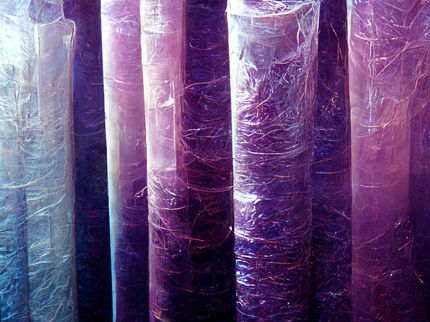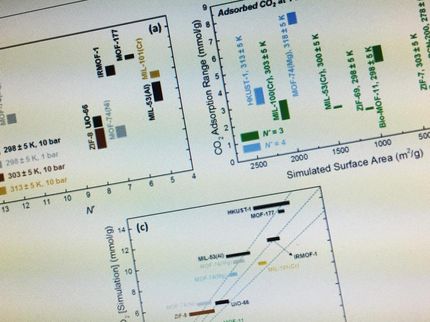A dash of gold improves microlasers
gold. The word brings to mind wedding rings, buried treasure and California in the 1840's.
But when gold is reduced to 1/100,000 the size of a human hair, it takes on an entirely new personality.
By attaching gold nanoparticles to the surface of a microlaser, researchers in the USC Viterbi School of Engineering demonstrated a frequency comb that takes up less space and requires 1000 times less power than current comb technology.
A frequency comb is a device that can create a rainbow of light from a single color. These devices have been used to improve cybersecurity, detection of toxic chemicals, and GPS. However, these industrial combs are generated using large systems requiring watts of input power. In order to create smaller systems that could enable residential or portable applications, the power requirements for wavelength generation and the device size must be significantly reduced.
The research team led by Andrea Armani, a professor in the Mork Family Department of Chemical Engineering and Materials Science, has demonstrated frequency combs requiring only milliwatts of input power by attaching gold nanorods to the surface of a single microlaser. The interaction of the light from the microlaser with the gold particles results in many additional wavelengths being generated. This process is further improved by a polymer coating on the nanoparticles. The power reduction decreases the system's footprint and takes the technology from the lab to real-world applications where both power consumption and size are important.
"These results exemplify what can happen if researchers from different fields work together on a basic science problem that has applied research impact," said Armani, the Ray Irani Chair in Engineering and Materials Science, whose lab is part of the new USC Michelson Center for Convergent Bioscience.
"By combining expertise in optics and in nanomaterials, we made exceptionally fast progress that challenged and disproved the conventional thought in the field that gold nanoparticles would be detrimental to the laser."
Co-lead author Vinh Diep describes the project as using innovations in nanomaterials to solve an integrated optics problem.
"The role of the gold nanorods is to increase the intensity of the light circulating in the device," Diep said. "The higher-intensity light can then interact with organic molecules on the surface of the gold to generate other wavelengths of light. This combined effect allows for the comb generation to begin at a much lower power than the traditional pulsed-laser approach."
Diep, a Materials Science PhD student, explained that a frequency comb that contains numerous emission wavelengths over a large wavelength range is advantageous. By using the gold nanorod coating, the research team observed a comb that can span over a wavelength range of 300 nanometers. Without the gold nanorods, a comb could not be generated at the same power.
Demonstrating a large range shows the device's strong potential for applications in developing a portable chemical spectroscopy system, where the chemical signal only occurs at a specific wavelength, and the accuracy is dependent on the light source.
The research was led by Vinh Diep and Rigoberto Castro-Beltrán, a USC-Conacyt Scholar at the University of Guanajuato. Additional engineering researchers involved were fellow PhD student Soheil Soltani and post-doctoral scholar Eda Gungor. The study has been accepted for publication in ACS Photonics.
Topics
Organizations
Other news from the department science
These products might interest you

NANOPHOX CS by Sympatec
Particle size analysis in the nano range: Analyzing high concentrations with ease
Reliable results without time-consuming sample preparation

DynaPro Plate Reader III by Wyatt Technology
Screening of biopharmaceuticals and proteins with high-throughput dynamic light scattering (DLS)
Efficiently characterize your sample quality and stability from lead discovery to quality control

Eclipse by Wyatt Technology
FFF-MALS system for separation and characterization of macromolecules and nanoparticles
The latest and most innovative FFF system designed for highest usability, robustness and data quality

Get the chemical industry in your inbox
By submitting this form you agree that LUMITOS AG will send you the newsletter(s) selected above by email. Your data will not be passed on to third parties. Your data will be stored and processed in accordance with our data protection regulations. LUMITOS may contact you by email for the purpose of advertising or market and opinion surveys. You can revoke your consent at any time without giving reasons to LUMITOS AG, Ernst-Augustin-Str. 2, 12489 Berlin, Germany or by e-mail at revoke@lumitos.com with effect for the future. In addition, each email contains a link to unsubscribe from the corresponding newsletter.




















































